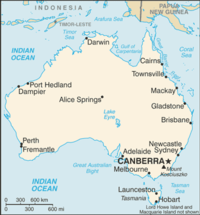User:Peursem
Homepage of Kyle Van Peursem[edit]

Summary of the assesment grading of articles in Wikepedia[edit]
-- The best articles in Wikepedia are featured articles. These are reviewed for accuracy, fairness, completeness, etc by Wikipedia editors. A bronze star on the page indicates is an article is FA.
-- A-Class articles are well-written, reasonably clear and complete description of the topic. May miss a few relavent points
-- Good articles are ones that have not yet made FA status due to length or other reasons but meet certain quality standards and pass through the good article nomination process.
-- B-class articles have most material needed for completed articles but has significant data missing and needs substantial editing
-- Start-class articles have some good material but are missing significant elements on the subject
-- Stub-class articles are very short or has disorganized information that needs a lot of work
Mesoscale Wiki Project Proposal[edit]
An idea that I have for this project is to further evaluate the atmospheric phenoenom of the Morning glory cloud which is only found in Northern Australia.
AMS Jounals on the Morning Glory Cloud
(Rough Draft) WikiProject: Morning Glories[edit]


What is the Morning Glory Cloud
The Morning Glory cloud is a rare atmospheric phenomenom that is mostly observed in Northern Australia's Gulf of Carpentaria. It is a rolling cloud that can be up to 1000 kilometers long, 1 to 2 kilometers high, and can move at speeds up to 40 kilometers per hour. The morning glory is often accompanied by sudden wind squalls, intense low-level wind shear, a rapid increase in the vertical displacement of air parcels, and a sharp pressure jump at the surface. In the front of the cloud, there is strong vertical motion that transports air up through the cloud and creates the rolling appearance, while the air in the middle and rear of the cloud becomes turbulent and sinks. The cloud can be described as a Solitary wave or a Soliton, which is a wave that has a single crest and moves without changing speed or shape.
What Causes the Morning Glory Cloud
Despite being studied extensively, the Morning Glory cloud is not clearly understood. Regardless of the complexity behind the nature of this atmospheric phenomenom, some conclusions have been made about the causes of the cloud. Through research, one of the main causes of most Morning Glory occurances are due to the mesoscale circulations associated with sea breezes that develop over the peninsula and the gulf. On the large scale, Morning Glories are usually associated with with frontal systems crossing central Australia and high pressure in northern Australia. Locals have noted that conditions ripe for the formation of the Morning Glory is for high humidity in the area, which provides moisture for the cloud to form and for strong sea breeze winds to be blowing the day before.
The Generalized Scenario for Morning Glory Formation
The following is a summary of the conditions that cause the Morning Glory cloud to form in the Gulf of Carpentaria. First, Cape York which is the penninsula that lies to the east of the gulf is large enough that sea breezes develop on both sides. The breeze from the Coral Sea coast blows in from the east and the breeze from the gulf blows in from the west. The two breezes meet in the middle of the penninsula and forces the air to rise there and a line of clouds form over the spine of the penninsula. When night comes, the air cools and decends and at the same time a surface inversion forms over the gulf (where the air as you go up in height becomes warmer rather than cooler). The densities in this stable layer are different above and below the inversion. The air descending from the penninsula to the east goes underneath the inversion layer and generates a wave or series of waves and travels across the gulf like ripples in a lake. The air rises in the front of the wave and sinks in the rear. In the early morning, the air is saturated enough so that the rising air in the front produces a cloud, which forms the leading edge of the wave, and evaporates in the back... hence forming the Morning Glory cloud. The cloud lasts until the surface inversion is burned off by the heating of the day. This scenario describes the most common way in which the Morning Glory cloud forms. There are other ways in which they form, especially in rarer cases in other parts of the world, but these are far less understood.
References[edit]
Menhofer A, Smith RK, Reeder MJ, Christie DR (1997) “Morning-Glory” Disturbances and the Environment in which They Propagate. Journal of the Atmospheric Sciences: Vol. 54, No. 13 pp. 1712–1725
Smith, Deborah. The Sydney Morning Herald: Morning Glory lures scientists to ride cloud nine. http://www.austms.org.au/Jobs/Library1.html
http://www.abc.net.au/northcoast/stories/s1012973.htm
http://www.meteo.physik.uni-muenchen.de/~roger/Tropics/Tropclds-o.htm
University of Utah Meteorology
| This user is a member of WikiProject Meteorology. |
| This user is a Christian. |
| This Wikipedian was a member of the United States Air Force. |
